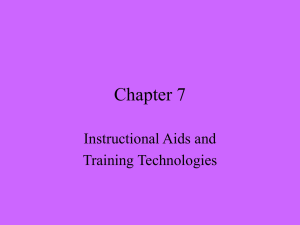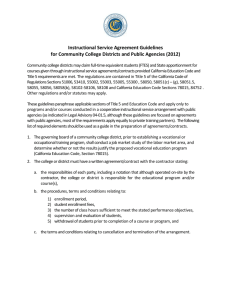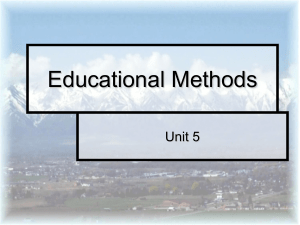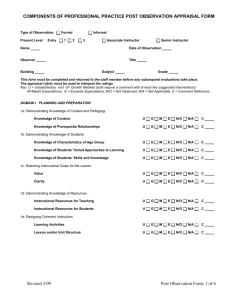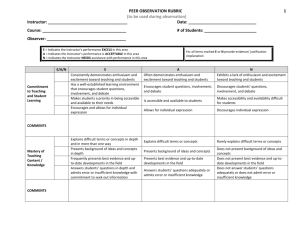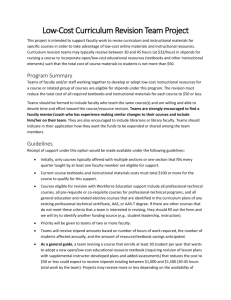Methods of Instruction
advertisement
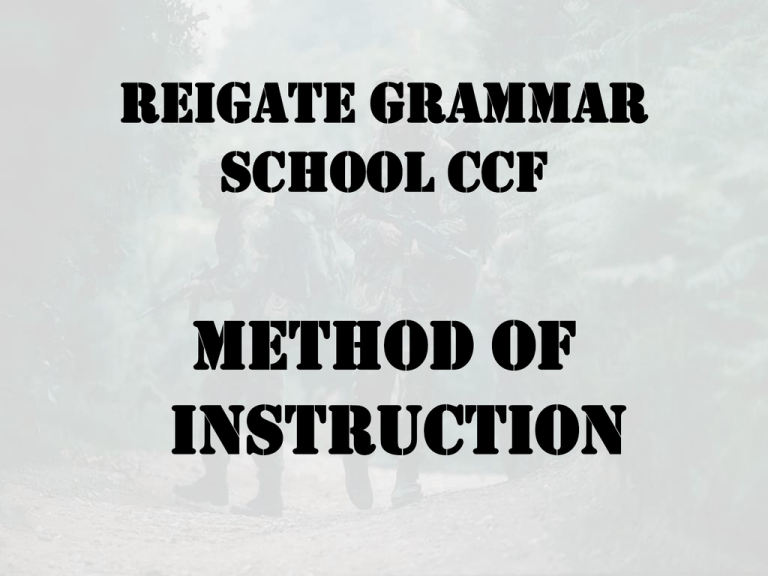
REIGATE GRAMMAR SCHOOL CCF METHOD OF INSTRUCTION INTRODUCTION QUALITIES OF A GOOD INSTRUCTOR C M A D E • • • • • CONFIDENCE MANNER ATTITUDE DILIGENCE ENTHUSIASM AIM (Instructional Objective) BASIC INSTRUCTIONAL TECHNIQUES THE REASON WHY • Familiarity breeds complacency • Instructors from time to time need revision to refresh their memory INCENTIVE A good instructor will derive satisfaction from having done his/her job well and his/her students will have learned to a higher standard THE PRINCIPLES AND TECHNIQUES OF GOOD INSTRUCTION PRINCIPLES - 3 • Preparation and Planning • Promotion and Maintenance of the desire to learn. • Confirmation that the Instruction has been Assimilated Techniques x 2 • Selection and use of visual aids • Question technique HOW TO PUT QUESTIONS TO THE CLASS PROMOTION AND MAINTENANCE OF THE DESIRE TO LEARN PROMOTION 1. Posters, displays, advertisement, photographs, exhibits. 2. Publications of forecasts, programmes and notice boards info. 3. At the end give a “Look Forward”. At the beginning give “Aim, Incentive and Reason Why.” MAINTENANCE 1. 2. 3. 4. 5. 6. Enthusiasm Creation of maximum activity Use of senses Aim for simplicity Create variety Plan to Avoid distractions HOW TO DEAL WITH QUESTIONS FROM THE CLASS PREPARATION AND PLANNING PREPARATION AND PLANNING 1. 2. 3. 4. 5. 6. 7. 8. The Instructional Objective Time The Class Subject Matter Test/examinations Presentation Resources The working environment PLANNING •THE BEGINNING •THE MIDDLE •THE END THE BEGINNING a. Preliminaries b. Revision c. The Instructional Objective THE MIDDLE a. The Main Instructional Matter i.e. Subject Matter b. Confirmation THE END a. Question: From b. Question: To c. Pack Kit d. Summary e. Look Forward CONFIRMATION Why Confirm? When to Confirm? 1. At the Beginning 2. In the Middle 3. At the End Note: Unplanned confirmation may be required at some stage if students appear to be in difficulty. HOW TO CONFIRM 1. Oral Test 2. Written Test 3. Performance Test (Variety) 1. Quizzes 2. Discussion Groups 3. Exercises 4. Games/Competitions SELECTION AND USE OF VISUAL AIDS a. Must be necessary b. Must be interesting c. Must Assist Instruction d. Must be selected carefully Using Aids Worthy of Comment a. Plan b. Rehearse c. Produce d. Describe e. Teach f. Dispose Question Technique Question technique is one that if properly applied can be a most effective instructional tool. If conducted wrongly it can detract from good instruction and leave students confused. It forms an integral part of confirmation. Question Technique a. To Test b. To Teach c. To Create Activity HOW SHOULD QUESTIONS BE ASKED ? DO’S AND DON'TS OF QUESTIONS DO: i. POSE ii. PAUSE iii. POINT Ensure the question is clear and unambiguous Note- Plan your questions carefully DO’S AND DON'TS OF QUESTIONS DON'TS a. ASK 50/50 QUESTIONS b. TEST SKILLS ORALLY c. TEST POWERS OF EXPRESSIONS HOW SHOULD QUESTIONS BE ANSWERED? a. Relevant Questions b. Irrelevant Questions c. Questions to which you do not have the answer. SUMMARY


